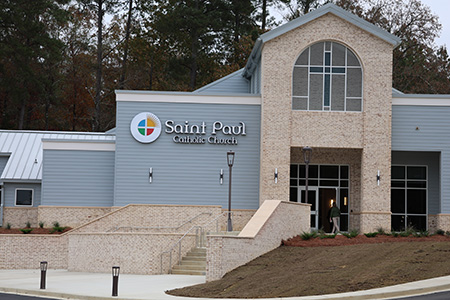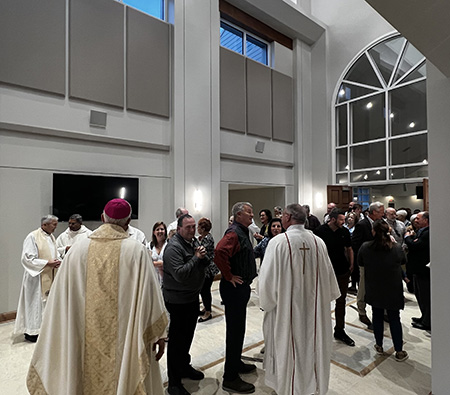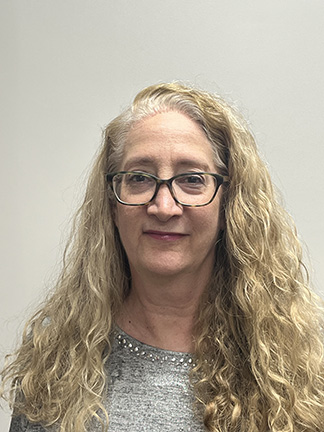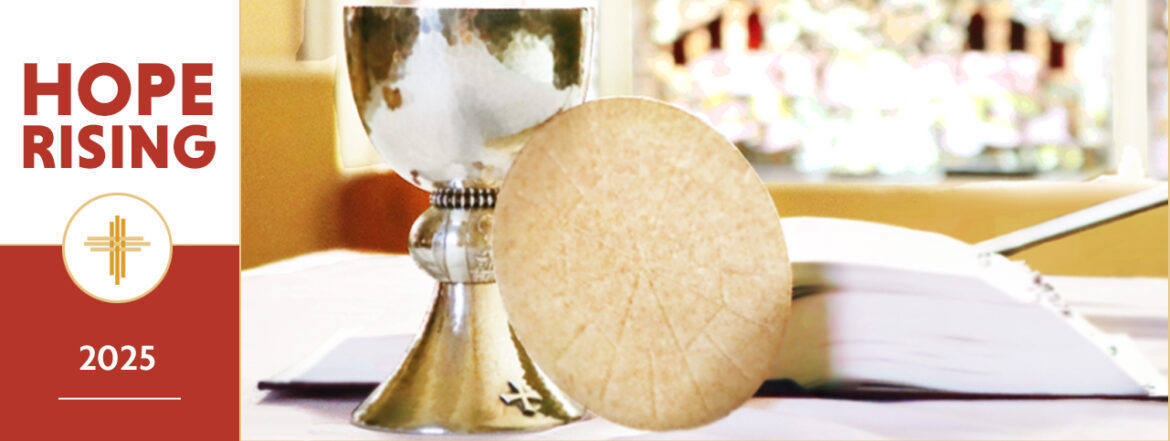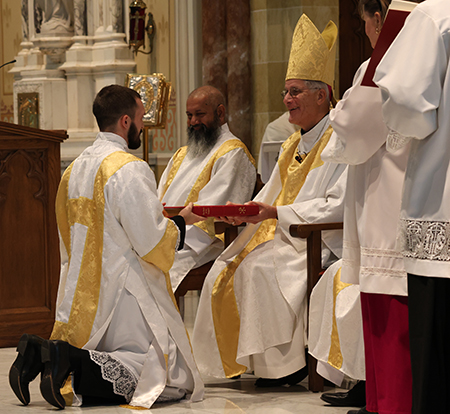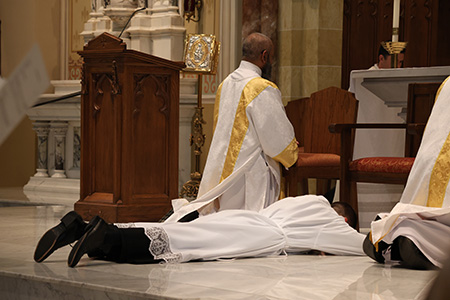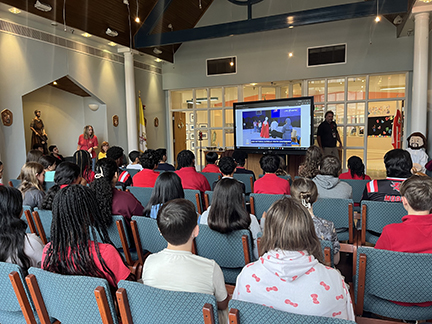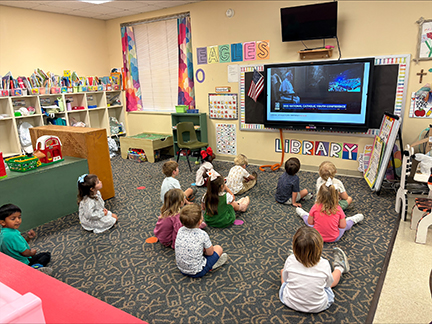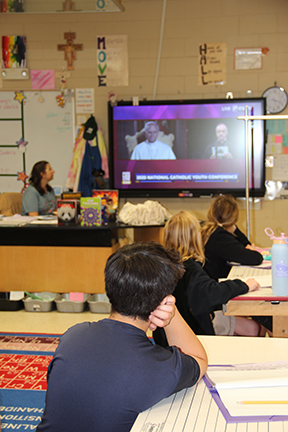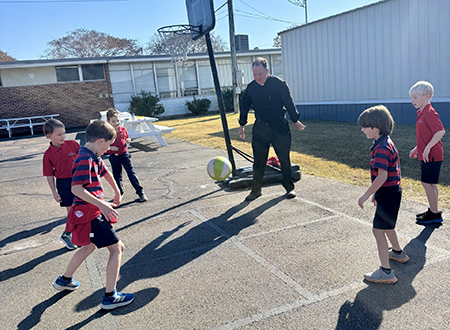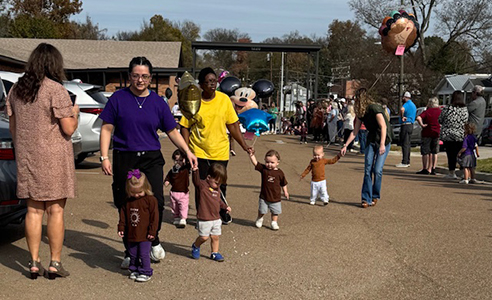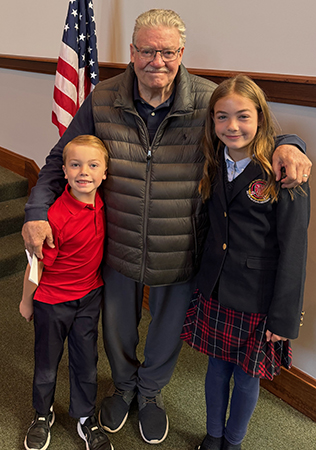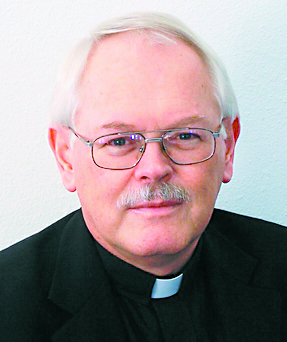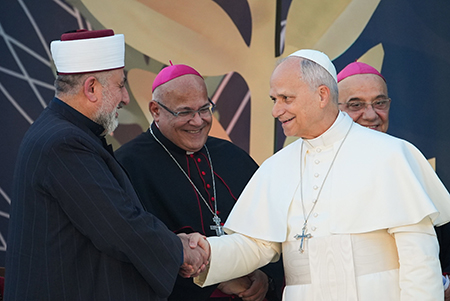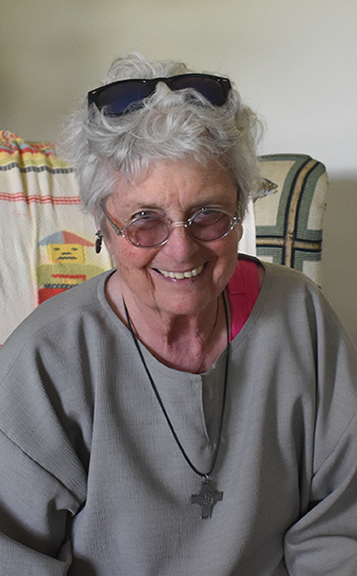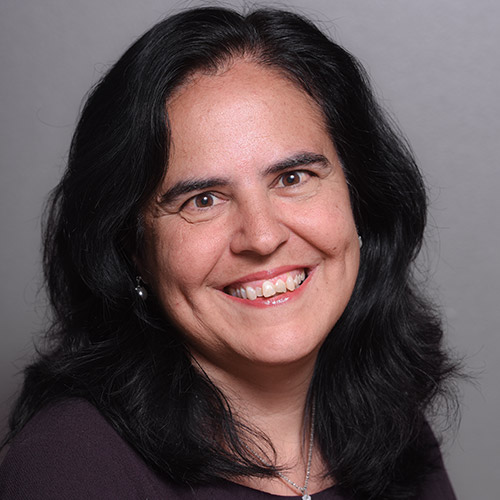By Joanna Puddister King
MADISON – Parish leaders from across the Diocese of Jackson gathered at St. Francis of Assisi Church on Saturday, Nov. 15, for the annual Fall Faith Formation Day, a one-day workshop hosted each November by the Department of Faith Formation. This year’s theme, “Pilgrims of Hope: Journeying Together,” invited catechists, youth ministers, DREs and parish volunteers to reflect on their call to accompany the people of God with renewed purpose.
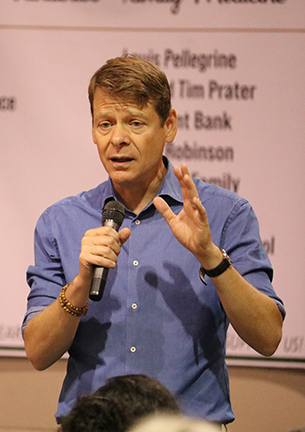
The keynote presenter was Robert Feduccia, a nationally recognized speaker who grew up in Brookhaven and attributes his own call to ministry to formative experiences in the Diocese of Jackson. He opened the day with lively “would you rather” questions that had participants laughing, moving and interacting with one another before leading them into deeper conversations about the heart of ministry.
Feduccia encouraged parish leaders to see themselves not as program directors who simply manage logistics, but as ministry leaders rooted in the church’s tradition and attentive to the lived reality of their parish communities. He noted that Mississippi’s Catholic population, though small and diverse, is uniquely positioned for authentic accompaniment and relationship-based ministry. He urged participants to present the faith as truly good news, helping people encounter Christ rather than focusing solely on intellectual debates or apologetics.
Sister Amelia Breton provided live translation during the keynote, allowing Spanish-speaking participants to engage fully. For the first time, the event also offered breakout sessions presented entirely in Spanish.
Throughout the day, attendees chose from a range of practical workshops addressing real needs in parish life. Presenters included Sister Amelia Breton, who spoke on accompaniment of migrant communities; Rebecca Harris, who discussed parish fundraising and stewardship; Emily Moran, who explored the confirmation journey with young people; Ruth Powers, who addressed reclaiming community life within parishes; Amelia Rizor, who focused on small-group ministry; and Debbie Tubertini, who offered insights on marriage enrichment. Spanish-language sessions were led by Danna Johnson and Raquel Thompson, who both presented on developing community involvement and small groups within parish settings.
In the closing session, Fran Lavelle, director of Faith Formation, introduced the work of the Bishop William R. Houck Center for Lay Formation. She emphasized that one of the most important lessons learned through the diocesan synod and pastoral reimagining process is the need to respond when the faithful are asked to share their needs and hopes. She said the Center represents a concrete response to that input and thanked those who helped develop its formation path.
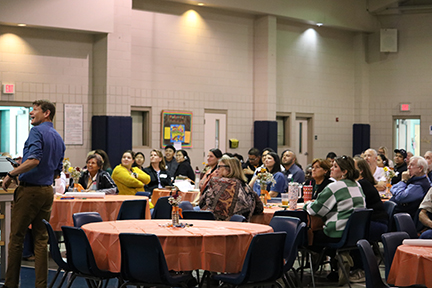
The Bishop Houck Center for Lay Formation is designed to help lay leaders grow in faith, knowledge and service through programs grounded in education, evangelization and leadership development. The initiative builds on Bishop Houck’s legacy of supporting lay ministry and evangelization and offers formation opportunities in both English and Spanish for parish teams and individual leaders across the diocese.
The event closed with a final keynote from Feduccia, sending participants back to their parishes encouraged, energized and reminded that God works powerfully through the faithful who say yes to serving his church.
(To learn more about the Bishop William R. Houck Center for Lay Formation and upcoming opportunities for training and enrichment, visit jacksondiocese.org/bishop-houck-center-for-lay-formation.)

